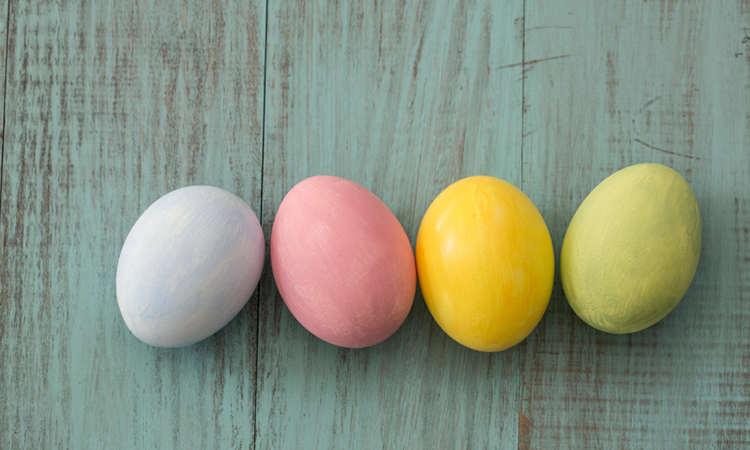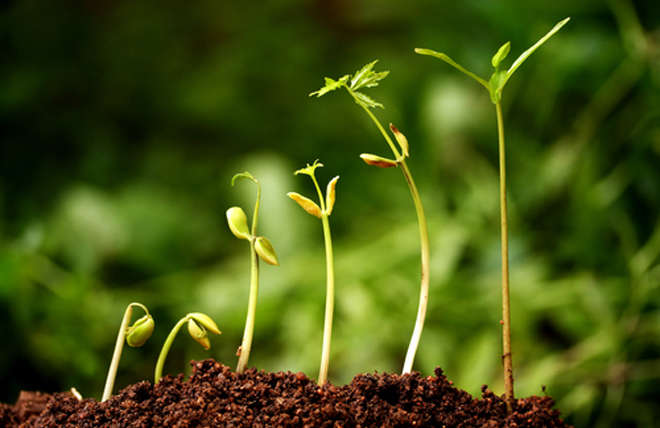
Finally, it’s spring! As winter thaws, menus shift from hearty foods, like squash and perhaps a few too many potatoes, to tiny strawberries and radishes, asparagus and new lettuce, green shoots of onion and garlic emerging in gardens. It’s a time to celebrate beginnings and renewal. Although we tend to think of fall and the harvest when considering events and traditions involving food—those holidays like Thanksgiving—spring also presents opportunities to explore the sacred origins of what we eat and why we eat it.
Every culture has meals associated with spring holidays. Jelly beans and hot cross buns say Easter. Gujiya, a dessert made with coconut, sugar, and evaporated milk, is served for the Holi, the Indian Festival of Colors. Family recipes and traditional fare like lamb on Eid or Passover, and treats like pistachio-rosewater cake on Nowruz or fried bananas on Vesak are what make these days more than just marks on a calendar.
Eggs are a universal symbol of new life and appear on lots of holiday tables. For many Christians, eggs were originally forbidden during Lent—the forty days leading up to Easter—as well as on other fast days. This is why churches often have pancake dinners on Shrove Tuesday—the day before Ash Wednesday—so that people can use up their eggs before Lent begins.
Since hens kept laying during Lent, but the eggs couldn’t be consumed, they were hard-boiled to preserve them. In Spain, hornazo, which includes hard-boiled eggs as a primary ingredient, is served on Easter, and in Hungary they are sliced and put into potato casseroles.
According to Christian legend, Mary Magdalene brought eggs to share with the women at Jesus’s tomb and when she saw the risen Christ, the eggs turned a bright crimson. That’s why we find red eggs decorating Greek Easter bread—tsoureki. In medieval Europe it became the custom to write scriptures and draw scenes from Bible stories on eggs. Fast-forward a few hundred years to baskets filled with cellophane grass, candy, and eggs colored with fluorescent dyes—all of this is rooted in spiritual tradition.
Eggs play a part in the Jewish Passover Seder—the celebration commemorating the story of Exodus in which the ancient Israelites were freed from slavery in Egypt—as well. A hard-boiled egg, or batzah, dipped in salt water represents the sacrifice at the Temple in Jerusalem. It shares the Passover plate with a roasted shank bone, or zeroa, to symbolize sacrifice; karpas, a vegetable dipped in salt water, for tears; matzo or unleavened bread, as a reminder of the Israelites’ haste in fleeing Egypt; maror, bitter herbs like horseradish, for bitter times of enslavement; and charoset, apples, nuts, and spices to symbolize the mortar used to build the temple.
As with Passover, specific foods are also served on Nowruz, the Persian New Year, which falls on the spring equinox and which is celebrated by Iranians, Central and South Asians, and even people in the Balkans. The Haft Sin or Seven S’s (in Persian) represent the seven elements of life: sabzeh, green sprouts, for rebirth; samanu, pudding made from sprouted grain, for wealth; senjed, fruit from the oleaster, or Russian olive tree, for love; sīr, or garlic, symbolizing healing or medicine; sīb, or apples, for health and beauty; sumac berries, whose color is reminiscent of the sunrise; and sekreh, or vinegar, for age and patience.
Lamb is another food that can be found on many Easter, Passover, and Eid tables, and its presence is steeped in religious belief. James and Kay Salter write in their wonderful book, Life is Meals (Knopf, 2006), that lambs “are mentioned forty-five times in the Bible.” They go on to explain that the Israelites rubbed lambs’ blood over their doors in remembrance of the first Passover, Jesus was called the Lamb of God, and “lamb and mutton dishes are also at the heart of Islamic traditions.”
Just as feasts mark holidays, there’s the not-eating that gives sacred meaning to the consumption. Fasting is practiced in almost every religion. Lent is meant to be a time of fasting and penance, and Jews fast before the celebration of Purim, while in Hinduism fasts are a regular part of practice all year round. Ramadan, the Islamic month of fasting, regularly falls in spring, as it is determined by a lunar calendar. It is a period of contemplation, purification, and charity culminating in Eid-ul-Fitr, when the fast is broken, often with dates, and a charitable deed is done for the poor, often giving food to the hungry.
Another spring festival involving feeding the hungry is Vesak, or Buddha Day, in May, which celebrates three major events in the life of the Buddha: his birth, Enlightenment, and death. On Vesak, Buddhists typically visit a temple or monastery and offer food to the monks. They might also distribute food to the poor to create good karma.
Marshmallow eggs or chocolate-covered matzo, dumplings or dates…whatever your religion or heritage, spring offers a perfect opportunity to consume with mindfulness, and to appreciate the history and symbolism behind each unique flavor of the season.
To find out about Rose’s thoughts on how to live a happier life, click here


